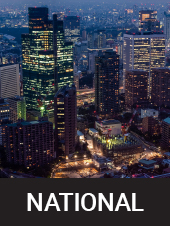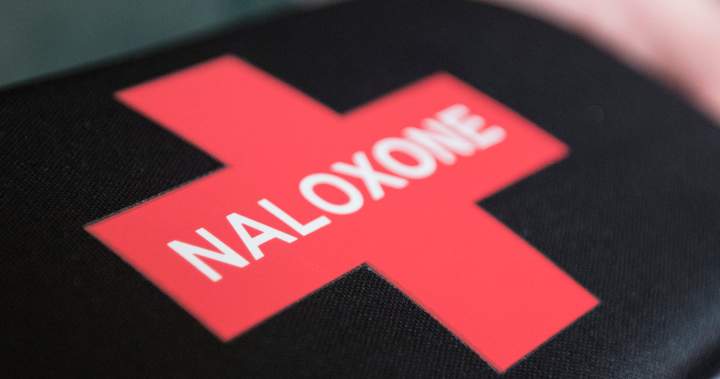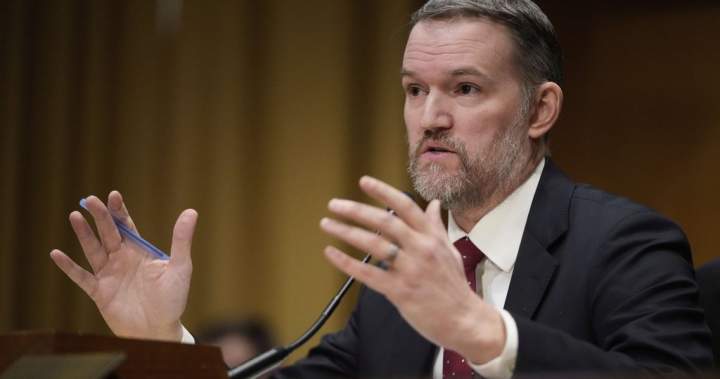
Travellers will soon be required to have their photograph taken when entering or leaving the U.S. by air, sea or land — including Canadians and even American citizens.
The U.S. Department of Homeland Security (DHS) said Monday the expansion of facial recognition and comparison capabilities at all ports of entry and all travellers, regardless of age, is necessary for national security, as well as to crack down on fraudulent documents and visa overstays.
It said the amended security policy will go into effect Dec. 26, but noted it could take years before a “comprehensive” biometric data collection system is in place.
“CBP (U.S. Customs and Border Protection) estimates that a biometric entry-exit system can be fully implemented at all commercial airports and sea ports for both entry and exit within the next three to five years,” the notice posted to the federal register says.
It adds additional pilot programs may be required to test photographing travellers entering and exiting by vehicle or on foot at land border crossings, as well as on private aircraft.
While the U.S. has been collecting biometric data from travellers upon entry for several years, the department and experts on both sides of the border say expanding it to those leaving is long overdue.
“There’s a lot of countries that do this, and we should be doing this too (in Canada),” said Kelly Sundberg, a criminology professor at Mount Royal University who studies border security.
The policy would require anyone entering or leaving the U.S. to have their photograph taken during the check-in process at airports, as well as when crossing the border on land and when docking or disembarking at a sea port.
The collected photos would then be cross-referenced with U.S. IDs and passports presented to CBP officials, or airline staff when boarding a plane.
CBP estimates it will take an average of 3.42 seconds to conduct facial comparison for each traveller.
The records could be held for up to 75 years, the DHS notice says, although photos of U.S. citizens will only be held for 12 hours. U.S. citizens will also be able to opt out of the facial recognition process, but will still have to have their identity verified by a CBP or airport gate agent.

Get breaking National news
For news impacting Canada and around the world, sign up for breaking news alerts delivered directly to you when they happen.
The new rule will also allow the collection of biometric fingerprint scans at both entry and exit, though this would not be applied to Canadians and citizens of other visa-exempt countries
DHS is also ending a rule that exempted travellers under the age of 14 and over the age of 79 from the collection of biometric information — a rule the department said was in place due to “technological limitations.”
The department said the exemption was lifted to allow “DHS to associate the immigration records created for children to their adult records later, which will help combat the trafficking of children, and screen for criminal history or associations with terrorist or other organizations seeking to violate applicable law throughout a person’s lifetime.”
Keith Cozine, a former DHS officer who’s now an associate professor of homeland security at St. John’s University in Queens, N.Y., said the policy isn’t a result of U.S. President Donald Trump’s broader immigration crackdown but “has been in the works for years.”
The creation of a comprehensive entry-exit traveller screening program in the U.S. was first called for by lawmakers in the 1990s, but became more urgent after the Sept. 11, 2001, terrorist attacks.
CBP notes it has been collecting biometric data since 2004, and conducted several pilot projects to photograph and fingerprint departing travellers during the Obama administration.
Several U.S. airports have gradually adopted entry and exit biometric screening as the technology improved and infrastructure was created to set up secure areas for outbound traveller processing and inspections.
The lack of such secure spaces at U.S. ports was among the “logistical and operational challenges in developing and deploying a biometric exit capability,” DHS said in its notice. The department said it’s still facing technological challenges as it moves to deploy the new policy at land border crossings.
The department first asked for public comment on comprehensive entry-exit traveller biometric screening in the final months of Trump’s first term in 2020, and did so again in 2021 during the Biden administration.
The DHS notice again calls for public comment by Nov. 26 on the collection process and the “costs and benefits” of implementing the expanded policy.
The Canada Border Services Agency (CBSA) uses biometric facial recognition technology at electronic inspection kiosks set up at 10 airports across the country, where photos taken of incoming travellers is matched with their passports.
However, using the kiosks is voluntary, and a spokesperson told Global News the agency “does not use facial recognition technology to conduct surveillance at the border.”
Sundberg and Cozine both said inadequate screening of travellers at Canadian ports of entry, especially those leaving the country, is the “Achilles heel” of Canadian border security.
“We have no idea who’s in the country, and we have no way of of definitively knowing who came in and when they left,” Sundberg said.
Both experts said the American system has effectively eliminated the use of fraudulent travel documents in the U.S.
Biometric screening is also prevalent in the European Union, Cozine noted.
The bloc launched a new system earlier this month that requires facial and fingerprint scanning for all non-EU citizens entering and exiting 25 member nations as well as Switzerland, Norway, Lichtenstein and Iceland, which make up the larger Schengen area.
Japan and other countries also employ biometric screening for entry and exit, including when boarding domestic flights by using facial recognition instead of boarding passes.
The Canadian Civil Liberties Association said in a news release Monday that facial recognition technology is highly prone to error and subjects racialized, non-white people to higher rates of false positives.
“This dramatic expansion of intrusive facial recognition capabilities is all the more troubling for its lack of accompanying privacy safeguards,” said CCLA executive director Howard Sapers.
“Biometric information is deeply sensitive and requires the highest level of protection, including rigorous security safeguards and effective privacy remedies.”
DHS said it intends to f0llow all domestic laws regarding privacy and said technological advancements have reduced the potential for bias and misidentification.
Cozine said privacy concerns aren’t unfounded but need to be balanced with both security and the facilitation of travel.
“The more data that you have on individuals, you can kind of weed out those individuals who pose the least threat, and then concentrate your security efforts on those who you don’t know much or anything about,” he said.
“So I think in the long run, the capturing of of these photos and attaching facial images to travel data is actually going to help facilitate entry for Canadians into the United States.”





